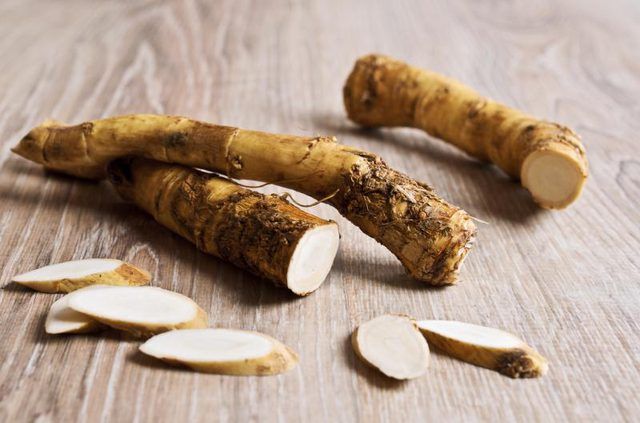Bulbs
Flower Basics
Flower Beds & Specialty Gardens
Flower Garden
Garden Furniture
Garden Gnomes
Garden Seeds
Garden Sheds
Garden Statues
Garden Tools & Supplies
Gardening Basics
Green & Organic
Groundcovers & Vines
Growing Annuals
Growing Basil
Growing Beans
Growing Berries
Growing Blueberries
Growing Cactus
Growing Corn
Growing Cotton
Growing Edibles
Growing Flowers
Growing Garlic
Growing Grapes
Growing Grass
Growing Herbs
Growing Jasmine
Growing Mint
Growing Mushrooms
Orchids
Growing Peanuts
Growing Perennials
Growing Plants
Growing Rosemary
Growing Roses
Growing Strawberries
Growing Sunflowers
Growing Thyme
Growing Tomatoes
Growing Tulips
Growing Vegetables
Herb Basics
Herb Garden
Indoor Growing
Landscaping Basics
Landscaping Patios
Landscaping Plants
Landscaping Shrubs
Landscaping Trees
Landscaping Walks & Pathways
Lawn Basics
Lawn Maintenance
Lawn Mowers
Lawn Ornaments
Lawn Planting
Lawn Tools
Outdoor Growing
Overall Landscape Planning
Pests, Weeds & Problems
Plant Basics
Rock Garden
Rose Garden
Shrubs
Soil
Specialty Gardens
Trees
Vegetable Garden
Yard Maintenance
How to Grow Horseradish
How to Grow Horseradish. Horseradish (*Armoracia rusticana*) grows as a perennial in U.S. Department of Agriculture plant hardiness zones 4 through 8 and can be grown as an annual in those and other USDA zones. When the plant grows as a perennial, its roots are left in the ground and harvested as needed. When it grows as an annual, its roots are...

Horseradish (Armoracia rusticana) grows as a perennial in U.S. Department of Agriculture plant hardiness zones 4 through 8 and can be grown as an annual in those and other USDA zones. When the plant grows as a perennial, its roots are left in the ground and harvested as needed. When it grows as an annual, its roots are harvested after the first autumn frost.
Planting Methods
Divided horseradish root crowns or underground root offshoots called sets are planted as soon as the ground thaws in spring. Temperatures of 60 to 65 degrees Fahrenheit are needed to develop large, flavorful roots. They thrive in a full-sun site.
Sterilize a knife or other cutting tool by soaking its blade, or blades, for five minutes in a solution that is 1 part household bleach and 2 parts of water. Rinse the tool with clean water, and let them air-dry.
Place one handful of 10-10-10 or 5-10-10 fertilizer, or one shovelful of compost, at the bottom of a planting furrow or 4- to 6-inch-deep planting hole, and top it with a 2-inch-thick layer of garden soil that has a pH level of 6 to 7.5.
If you want to plant a root crown, then use your disinfected cutting tool to divide a horseradish root into four equal sections, each with some root tissue and leaves. Let the sections sit for several days to heal the wounds from cuts, and then plant them at a 45-degree angle with the crown portion 2 inches deep and 12 inches apart.
Planting root offshoots, or sets, requires cutting pencil-thick roots 6 to 8 inches long from the sides of mature roots. Plant them 2 to 3 inches deep and 12 inches apart with each one's angled end pointing downward and its square end pointing upward.
Whichever planting method you use, water the soil well afterward.
Water, Fertilizer and Maintenance
Give horseradish's soil 1 to 2 inches of water each week, with the water penetrating 18 to 24 inches deep. Roots lacking water become woody and flavorless. Overwatered roots become soft and strongly flavored.
Apply 1 teaspoon of nitrogen, 21-0-0, for every plant one and two months after planting. Sprinkle it on the soil around each plant, and water the soil well.
Encourage a horseradish plant to produce smooth roots by digging into the soil from the top of the plant's main root, or taproot, when the plant's largest leaves are 8 inches long. Strip small roots growing from the middle and top of the taproot, and replace the soil. Repeat this procedure after a few weeks.
Procedure for Harvest
Horseradish plants can be harvested their first year if they have a frost-free growing season of at least 150 days, but their roots that go through several frosts have better flavor. Roots can be harvested in fall, but they have the best, hottest flavor when harvested in spring.
Horseradish roots ready for harvest should be smooth and solid, not hollow, with few cracks and crevices or small rootlets growing on their exteriors.
When harvesting the roots of horseradish grown as an annual plant, remove all the roots to prevent the plant from continuing to grow. Store the roots during winter in moist sawdust or sand in a dark root cellar, or store them in moist sand in a plastic bag inside a refrigerator. They will retain their flavor for three months. The next spring, divide and replant the roots that you didnít use.
Variety Identification
Horseradish varieties are classified by the size, texture and shape of their leaves. Three main varieties are:
"Maliner Kren" (Armoracia rusticana "Maliner Kren"), also called "Common" horseradish. It has crinkly leaves and grows large, high-quality roots.
"Bohemian" (Armoracia rusticana "Bohemian"), which has smooth, medium-size leaves that are attached to the stems at 60- to 90-degree angles. Its smooth, quality roots are smaller than roots of "Maliner Kren." "Sass" and "Swiss" are strains of "Bohemian" and have leaves and roots similar to it.
"Big Top Western" (Armoracia rusticana "Big Top Western"), which has large, smooth, tapering leaves. Although its roots are rough and corky on the outside, they are large and considered to be of good quality.